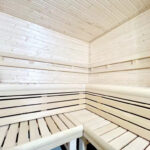Are Crystals Metamorphic Rocks? The answer is generally no, but the relationship is more nuanced. While crystals themselves aren’t metamorphic rocks, the process of metamorphism can create and significantly alter crystals within rocks. At rockscapes.net, we delve into the fascinating world of rocks and landscapes, providing insights and inspiration for your outdoor projects. Let’s explore how metamorphism and crystallization intertwine to shape the beautiful and durable stones we use in our gardens and landscapes.
1. Understanding Metamorphic Rocks: A Transformative Process
Metamorphic rocks are rocks that have been changed by extreme heat and pressure. They begin as igneous, sedimentary, or even other metamorphic rocks, but these elements alter the original rock’s mineral composition, texture, or both, resulting in a new type of rock.
1.1. What is Metamorphism?
Metamorphism is the alteration of existing rocks by heat, pressure, or chemically active fluids. This happens deep within the Earth’s crust. Unlike igneous processes, metamorphism doesn’t involve melting. It’s also different from weathering, which occurs at lower temperatures. According to Arizona State University’s School of Earth and Space Exploration, pressure and temperature are major components in metamorphic process.
1.2. The Protolith: The Parent Rock
The original rock that undergoes metamorphism is called the protolith. During metamorphism, the protolith’s chemistry and mineralogy change due to temperature, confining pressure, and reactive fluids. The rock’s texture is also affected by heat, pressure, and directed stress.
1.3. The Agents of Metamorphism
Three main agents drive metamorphism: temperature, pressure (both confining and directed), and chemically reactive fluids.
1.3.1. Temperature (Heat)
Heat provides the energy needed for chemical reactions to occur. Metamorphism begins at temperatures as low as 200°C and can continue up to 1,100°C. If the temperature is too high, the rock melts, transitioning into igneous processes.
1.3.2. Pressure
Pressure is the force exerted on a material. There are two types of pressure that affect metamorphic rocks:
- Confining Pressure: Equal pressure from all directions, causing chemical reactions and the formation of new minerals.
- Directed Stress: Unequal forces in one or more directions, modifying the arrangement, size, and shape of mineral crystals.
1.3.3. Fluids
Chemically reactive fluids, primarily water and carbon dioxide, facilitate chemical reactions by transporting ions and promoting the formation of new minerals. This is known as hydrothermal metamorphism.
2. How Metamorphism Affects Crystals
Metamorphism plays a crucial role in the formation, alteration, and recrystallization of crystals within rocks. Here’s how:
2.1. Recrystallization
Recrystallization is a key process where minerals dissolve in areas of high stress and regrow in areas of lower stress. This can lead to:
- Increased Grain Size: Smaller crystals merge to form larger ones.
- Changes in Crystal Shape: Crystals can become elongated or flattened depending on the direction of stress.
- Realignment of Minerals: Platy minerals like mica align perpendicular to the direction of stress, creating foliation.
2.2. Formation of New Minerals
Metamorphism can lead to the formation of entirely new minerals that were not present in the protolith. These new minerals, called index minerals, are indicative of specific temperature and pressure conditions.
2.3. Destruction of Existing Crystals
In some cases, extreme metamorphism can break down existing crystals. This occurs with fault metamorphism. Where rocks are brittle and the faulting create rock flour, rock is ground up to the particle size of the flour we use to make food.
2.4. Impact on Crystal Structures
The intense pressures and temperatures can change the crystal structures of minerals.
 Pebbles in quartzite deformed by directed stress
Pebbles in quartzite deformed by directed stress
3. Types of Metamorphic Textures: Foliated vs. Non-Foliated
The texture of a metamorphic rock describes the shape and arrangement of its mineral grains. There are two main types of metamorphic textures:
3.1. Foliated Texture
Foliation refers to the parallel alignment of minerals, typically platy minerals like mica. This alignment gives the rock a layered or banded appearance. Foliation occurs when minerals line up in planes. Certain minerals, most notably minerals of the mica group, form mostly thin and planar crystals that may become aligned.
3.1.1. Common Foliated Rocks
- Slate: Fine-grained with a flat foliation called slaty cleavage, often used for roofing.
- Phyllite: Similar to slate but with larger platy minerals, giving it a sheen.
- Schist: Medium- to coarse-grained with visible platy minerals like mica.
- Gneiss: Coarse-grained with distinct bands of light and dark minerals.
 Alternating bands of light and dark minerals.
Alternating bands of light and dark minerals.
3.2. Non-Foliated Texture
Non-foliated rocks lack a layered or banded appearance. They typically consist of interlocking crystals of one or a few minerals. Non-foliated rocks do not have lineations, foliations, or show other alignments of mineral grains. These rocks are typically composed of just one mineral, and usually show evidence of metamorphic recrystallization.
3.2.1. Common Non-Foliated Rocks
- Quartzite: Forms from sandstone, with enlarged and interlocked quartz grains.
- Marble: Forms from limestone or dolostone, with larger interlocking crystals of calcite or dolomite.
- Hornfels: Dense, fine-grained rock formed by contact metamorphism.
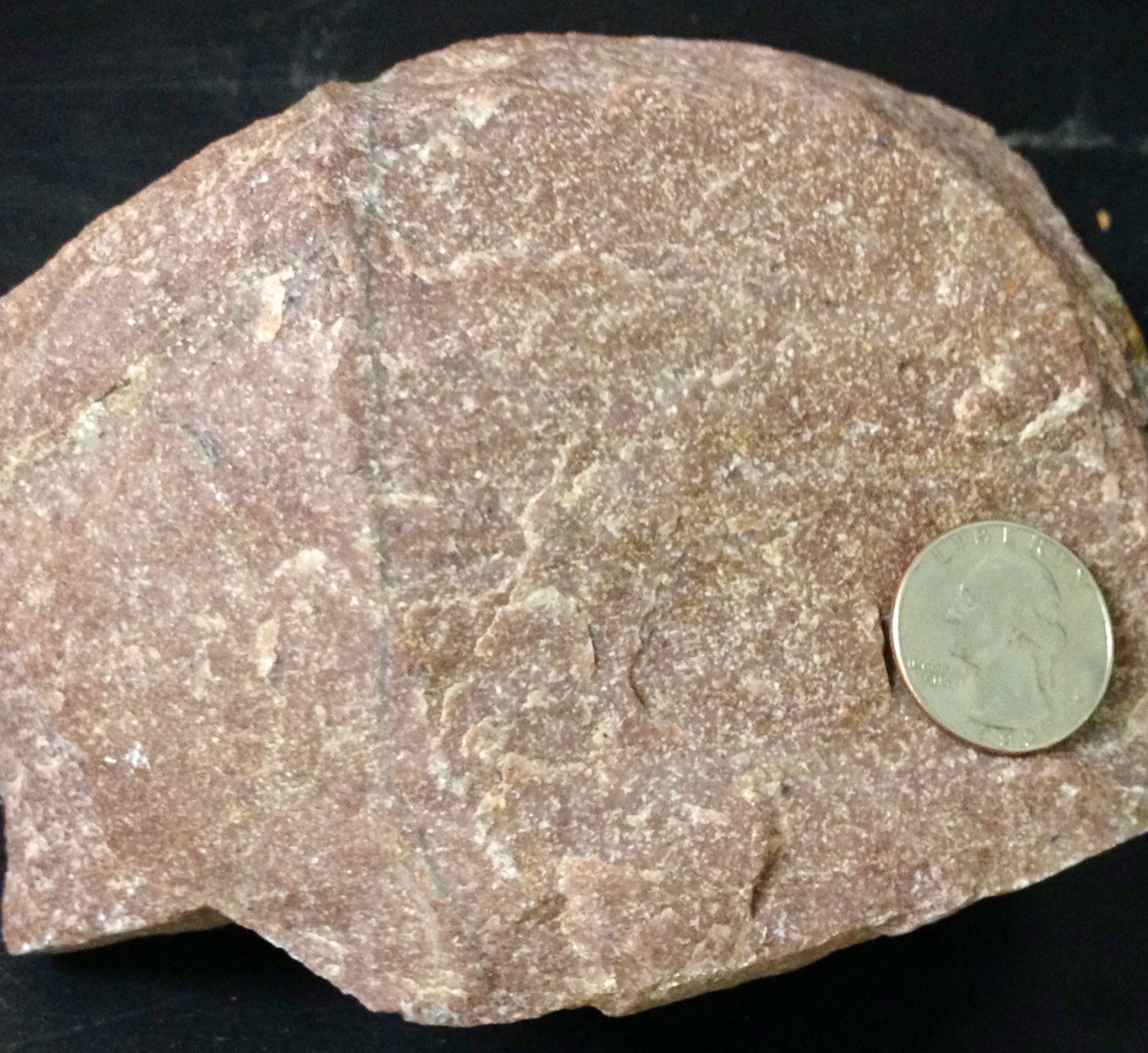 Crystallized rock with interlocking crystals.
Crystallized rock with interlocking crystals.
4. Examples of Crystal Transformation in Metamorphic Rocks
4.1. Garnet in Schist
Garnet is a common porphyroblast (a large crystal surrounded by smaller grains) found in schist. The presence of garnet indicates high-grade metamorphism, as it forms under high-pressure and high-temperature conditions.
4.2. Mica in Schist and Gneiss
Mica, such as muscovite and biotite, is a key component of schist and gneiss. During metamorphism, mica crystals align to create the foliation that defines these rocks.
4.3. Quartz in Quartzite
In quartzite, the original quartz grains from sandstone recrystallize and interlock, forming a very hard and durable rock.
4.4. Calcite in Marble
Marble is composed of recrystallized calcite or dolomite crystals, which give it a distinctive appearance and make it suitable for carving and decoration.
5. Metamorphic Grade: Gauging the Intensity of Change
Metamorphic grade refers to the intensity of metamorphism, ranging from low grade (slight changes) to high grade (significant changes). Geologists use index minerals to determine metamorphic grade, as different minerals form under different conditions.
5.1. Index Minerals
Index minerals like chlorite, muscovite, biotite, garnet, staurolite, kyanite, and sillimanite indicate increasing metamorphic grade in metamorphosed shales.
5.2. Metamorphic Facies
Metamorphic facies are defined by specific mineral assemblages that are stable under certain pressure-temperature conditions. These facies help geologists interpret the metamorphic history of a rock.
6. Metamorphic Environments: Where Transformation Occurs
Metamorphic rocks form in various geological settings, each with unique pressure-temperature conditions.
6.1. Burial Metamorphism
Occurs when rocks are buried at depths of more than 2,000 meters, typically in sedimentary basins. This leads to low-grade metamorphism.
6.2. Contact Metamorphism
Happens when hot magma intrudes into or lava flows over existing rock, resulting in high-temperature, low-pressure conditions. This often creates non-foliated rocks like hornfels, quartzite and marble.
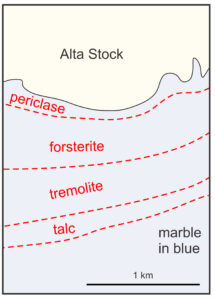 Contact aureole around the Alta Stock
Contact aureole around the Alta Stock
6.3. Regional Metamorphism
Occurs over large areas due to increased temperature and pressure from burial, often associated with mountain building.
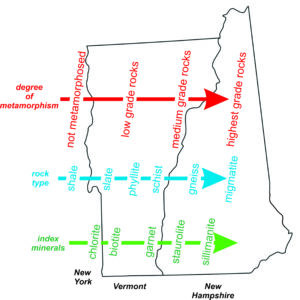 vt-nh-map
vt-nh-map
6.4. Subduction Zone Metamorphism
Takes place in subduction zones where oceanic lithosphere descends beneath continental lithosphere, creating high-pressure, low-temperature conditions.
6.5. Fault Metamorphism
Results from dynamic recrystallization caused by shear forces along fault lines.
6.6. Shock Metamorphism
Occurs during meteorite impacts, producing high pressures and temperatures rapidly.
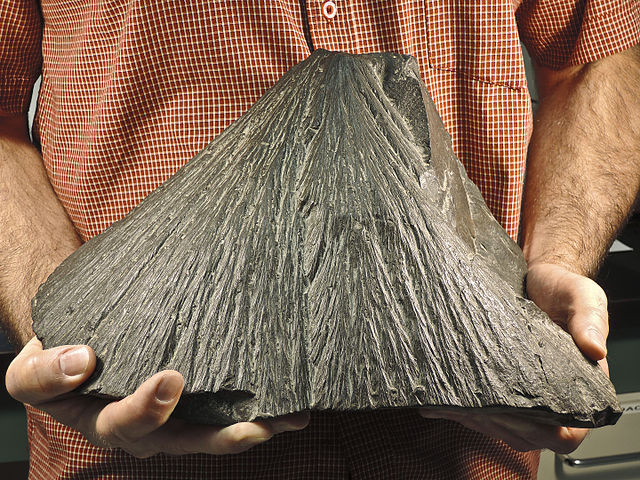 Shatter cones are cone-shaped features, that show lines that converge to cone shapes.
Shatter cones are cone-shaped features, that show lines that converge to cone shapes.
7. The Role of Metamorphic Rocks and Crystals in Landscaping
Metamorphic rocks, with their varied textures, colors, and durability, are highly valued in landscaping. They add a touch of natural beauty and resilience to any outdoor space.
7.1. Popular Metamorphic Rocks for Landscaping
- Slate: Used for paving, walkways, and wall cladding due to its flat, easily cleavable sheets.
- Quartzite: Ideal for pathways, retaining walls, and decorative rock features, known for its hardness and resistance to weathering.
- Marble: Used for decorative elements, sculptures, and garden accents, offering a classic and elegant look.
- Gneiss: Suitable for retaining walls, rock gardens, and water features, providing a rugged and natural aesthetic.
7.2. Benefits of Using Metamorphic Rocks in Landscaping
- Durability: Metamorphic rocks are generally very resistant to weathering and erosion, making them long-lasting landscaping materials.
- Aesthetic Appeal: The unique textures and colors of metamorphic rocks add visual interest and natural beauty to landscapes.
- Versatility: Metamorphic rocks can be used in a variety of landscaping applications, from paving to decorative features.
- Sustainability: Using locally sourced metamorphic rocks can reduce transportation costs and environmental impact.
8. Common Questions About Crystals and Metamorphic Rocks
8.1. Are all metamorphic rocks crystalline?
Yes, metamorphic rocks are composed of interlocking crystals. The size and arrangement of these crystals determine the rock’s texture.
8.2. Can metamorphism create gemstones?
Yes, metamorphism can create gemstones like garnet, kyanite, and staurolite, which are index minerals that form under specific metamorphic conditions.
8.3. How can I identify a metamorphic rock?
Look for foliation (layered appearance) or interlocking crystals. Also, consider the rock’s hardness, color, and mineral composition.
8.4. What is the difference between marble and granite?
Marble is a metamorphic rock formed from limestone or dolostone, composed mainly of calcite or dolomite. Granite is an igneous rock composed of quartz, feldspar, and mica.
8.5. Is quartzite harder than sandstone?
Yes, quartzite is significantly harder than sandstone due to the recrystallization and interlocking of quartz grains during metamorphism.
8.6. Where can I find metamorphic rocks?
Metamorphic rocks are commonly found in mountain ranges, shield regions, and areas with a history of tectonic activity.
8.7. How does metamorphism relate to plate tectonics?
Plate tectonic processes, such as subduction and continental collision, create the high-pressure and high-temperature conditions necessary for regional metamorphism.
8.8. What is the role of water in metamorphism?
Water acts as a catalyst, facilitating chemical reactions and allowing for the transport of ions, which promotes the formation of new minerals.
8.9. Can metamorphic rocks melt and become igneous rocks?
Yes, if the temperature becomes high enough, metamorphic rocks can melt and become magma, which then cools and solidifies to form igneous rocks.
8.10. Are metamorphic rocks always harder than their protoliths?
Not always, but in many cases, metamorphism increases the hardness and density of rocks due to recrystallization and the formation of new, more stable minerals.
9. Discover the Beauty of Metamorphic Rocks with Rockscapes.net
At rockscapes.net, we are passionate about providing you with the knowledge and inspiration you need to create stunning landscapes using natural stone. Whether you are a homeowner, landscape designer, or contractor, we have the resources and expertise to help you bring your vision to life.
9.1. Explore Our Wide Selection of Metamorphic Rocks
We offer a diverse range of metamorphic rocks, including slate, quartzite, marble, and gneiss, sourced from reputable suppliers. Each type of stone has unique characteristics and can be used in a variety of landscaping applications.
9.2. Get Inspired by Our Design Ideas
Browse our gallery of landscape design ideas featuring metamorphic rocks. From elegant marble sculptures to rugged quartzite retaining walls, we showcase the versatility and beauty of natural stone in outdoor spaces.
9.3. Learn from Our Expert Guides
Access our library of expert guides and tutorials on working with metamorphic rocks. Learn about site preparation, installation techniques, and maintenance tips to ensure your landscape projects are successful.
9.4. Connect with Our Team of Professionals
Our team of experienced landscape designers and stone specialists is here to help you every step of the way. Contact us for personalized advice, product recommendations, and project support.
10. Transform Your Landscape Today
Ready to create the landscape of your dreams? Visit rockscapes.net today to explore our selection of metamorphic rocks, get inspired by our design ideas, and connect with our team of experts. Let us help you transform your outdoor space into a stunning and sustainable oasis.
10.1. Contact Us
For more information about our products and services, please contact us:
- Address: 1151 S Forest Ave, Tempe, AZ 85281, United States
- Phone: +1 (480) 965-9011
- Website: rockscapes.net
10.2. Call to Action
Visit rockscapes.net today to explore design ideas, discover a variety of stone options, and get expert advice for your next landscaping project. Transform your outdoor space with the natural beauty and durability of metamorphic rocks.
